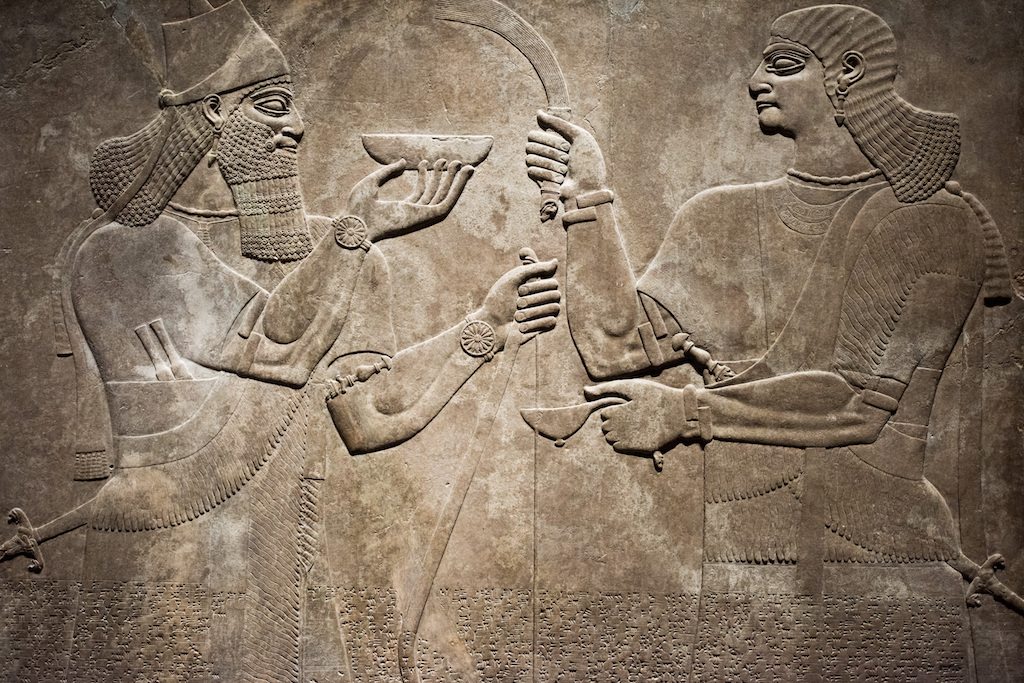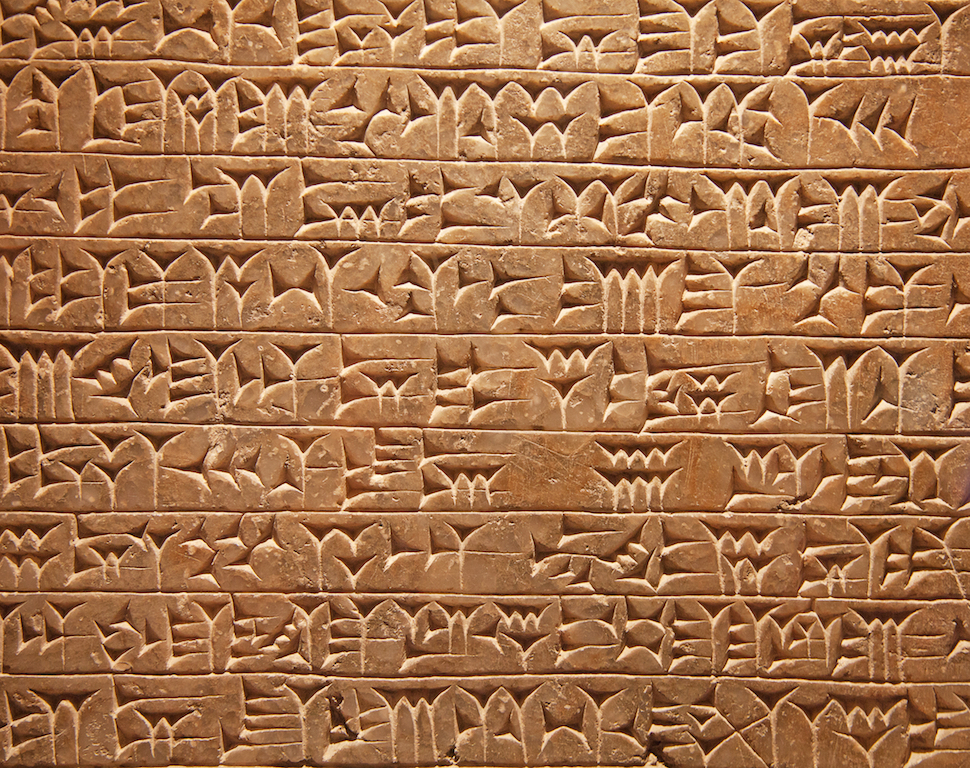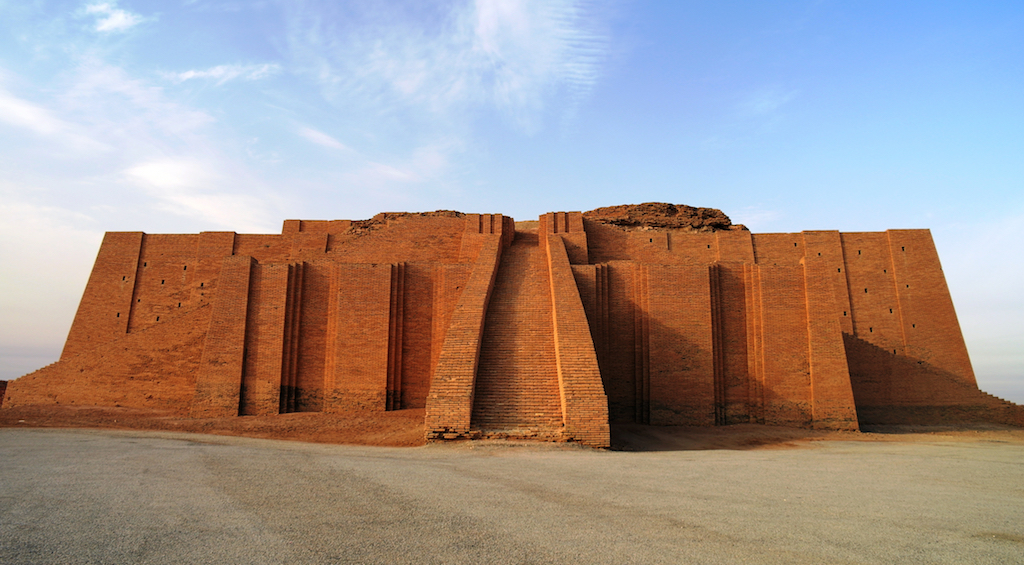Mesopotamia: The Land Between Two Rivers
Reference Article: Facts about Mesopotamia.

Mesopotamia refers to a broad area that can include all of Iraq, eastern Syria, southeast Turkey, parts of western Iran and Kuwait. The word "Mesopotamia," is an ancient Greek name that is sometimes translated as "the land between two rivers" — the rivers being the Euphrates and the Tigris, both of which originate in eastern Turkey and flow south to the Persian Gulf.
Some of the world's earliest cities were constructed within the broader area of Mesopotamia, along with what's likely the world's oldest writing system. The citizens of this area contributed to many important discoveries and developments in astronomy, mathematics and architecture. Many cultures and empires flourished in Mesopotamia over millennia, including the Sumerians, Assyrians and Babylonians. Warfare frequently occurred in the area; evidence of early urban warfare is found at the site of Hamoukar.
Related: Bringing Ancient Mesopotamia to Life
Mesopotamian cities
Archaeological work has shown that numerous early cities such as Uruk, Eridu and Hamoukar flourished in Mesopotamia. An ancient Babylonian myth claims that Eridu, a site located in southern Iraq, is the oldest city in the world and was created by the gods, wrote Zainab Bahrani, a professor of ancient near-eastern art and archaeology at Columbia University, in her book "Mesopotamia: Ancient Art and Architecture" (Thames & Hudson, 2017).
"A city had not been made, a living creature had not been placed. All the lands were sea… Then Eridu was made," part of the myth says in translation.
While the ancient Babylonians believed that Eridu was the first city on the planet, modern-day archaeologists are not so sure. The area was excavated in the mid-20th century; archaeologists found that the earliest artifacts and structures date to about 7,300 years ago, Bahrani noted. Other ancient cities in Mesopotamia, such as Uruk, also date back to around that time. Additionally, other sites outside of Mesopotamia, such as Catalhoyuk (located in Turkey) and Jericho (located in the West Bank), date back even earlier, to around 9,500 years ago.
Where cuneiform originated
Mesopotamia gave birth to a writing system that many scholars believe is the oldest in the world, dating back to more than 5,200 years ago. Written on clay tablets, this writing system is often called "cuneiform" by modern-day scholars. The scribblings on these tablets often looks wedge shaped and encodes a number of different languages that changed over time, such as Sumerian, Assyrian and Babylonian.
Related: In Photos: Lost Prehistoric Code Found in Mesopotamia
The people of Mesopotamia wrote about a wide range of subjects. These include works of literature, such as the "Epic of Gilgamesh," as well as texts that discuss religion, trade, science, law and even some that record ancient riddles.
Cuneiform writing may have evolved from tokens that had symbols on them, and were sometimes wrapped up in a clay ball that had images on it. Deciphering what the tokens within the clay balls mean is a subject of ongoing research.

Mesopotamian science and math
Many scientific and mathematical discoveries were made in Mesopotamia. For instance, the earliest evidence of trigonometry comes from a 3,700-year-old Babylonian tablet. Recent research also revealed that the ancient Babylonians discovered a rudimentary form of calculus, and used it to track the movement of Jupiter.
The mathematical and astronomical discoveries that the people of Mesopotamia made allowed for the development of calendar and timekeeping systems that are still used today.
Mesopotamian construction
The people of Mesopotamia were also proficient in architecture, engineering and construction. They built a complex and ever-changing system of canals and levees to irrigate their crops, allowing food to be grown in areas that lacked rainfall. These irrigation systems were particularly important in southern Mesopotamia, which often does not get enough rainfall to support agriculture.
Another impressive Mesopotamian architectural achievement is the construction of ziggurats — elaborate, pyramid-like towers that dominated the skylines of many of the area's cities. Ziggurats appear to have played a role in religious rituals. "From an architectural perspective, the experience of climbing a ziggurat was one of reverential climbing upward in a ceremonial manner, of stopping and turning in certain places, a course necessary for religious procession," Bahrani wrote.
One ziggurat, dedicated to the god Marduk and built by Babylonian king Nebuchadnezzar II around 2,500 years ago, may have inspired the biblical story of the Tower of Babel: The royal bragged that he had countries all over the world work together to build it.
Related: In Photos: Treasures of Mesopotamia
"I mobilized [all] countries everywhere, [each and] every ruler [who] had been raised to prominence over all the people of the world [as one] loved by Marduk..." an inscription written in the name of Nebuchadnezzar II reads.
The Ishtar Gate, one of the eight gateways that provided entry to the inner city of Babylon, is also considered an architectural masterpiece by modern day scholars. Also constructed by Nebuchadnezzar II, it was built with glazed blue bricks that depict alternating rows of bulls and dragons.
Another impressive architectural achievement is the Hanging Gardens of Babylon, hailed as a "wonder of the world" by several ancient writers. The Greek philosopher Strabo (lived 63 BC — c. AD 24) wrote that the gardens had trees and plants growing amid vaulted arches and stairways. A pump system allowed water to go up and into the gardens, Strabo wrote. However, archaeologists have not found remains of the gardens, and there is a debate as to whether they really existed. One theory is that they existed, but were actually located at the city of Nineveh.

Most influential cultures
Many different peoples, cultures, civilizations and empires flourished in Mesopotamia throughout history. Famous examples include the Sumerians, a society that used a common language and similar artifacts, and may have been the first to use cuneiform writing. They flourished throughout Mesopotamia during the fourth and third millennium B.C., although they were rarely politically united.
Another famous Mesopotamian people are the Assyrians. In ancient times, they formed an empire that stretched across much of the Middle East. This group constructed several famous cities, including Assur, Nineveh and Nimrud. Today, the modern-day Assyrian people still live in Iraq and Syria, although recent wars have resulted in many Assyrians being killed or forced to flee their homes. The terrorist group ISIL (also called Daesh) has looted or destroyed many Assyrian historical sites.
The Babylonians are another famous people that flourished in Mesopotamia. At their peak, about 2,500 years ago, they controlled an empire that stretched from the Persian Gulf to the Egyptian border. Their scientists are credited with making major discoveries in mathematics and astronomy.
Additional resources:
- Read about the discovery of a palace in Iraq.
- Learn about the lost city of Irisagrig.
- Read about the discovery of the lost city of Mardaman in Iraq.
Sign up for the Live Science daily newsletter now
Get the world’s most fascinating discoveries delivered straight to your inbox.

Owen Jarus is a regular contributor to Live Science who writes about archaeology and humans' past. He has also written for The Independent (UK), The Canadian Press (CP) and The Associated Press (AP), among others. Owen has a bachelor of arts degree from the University of Toronto and a journalism degree from Ryerson University.










